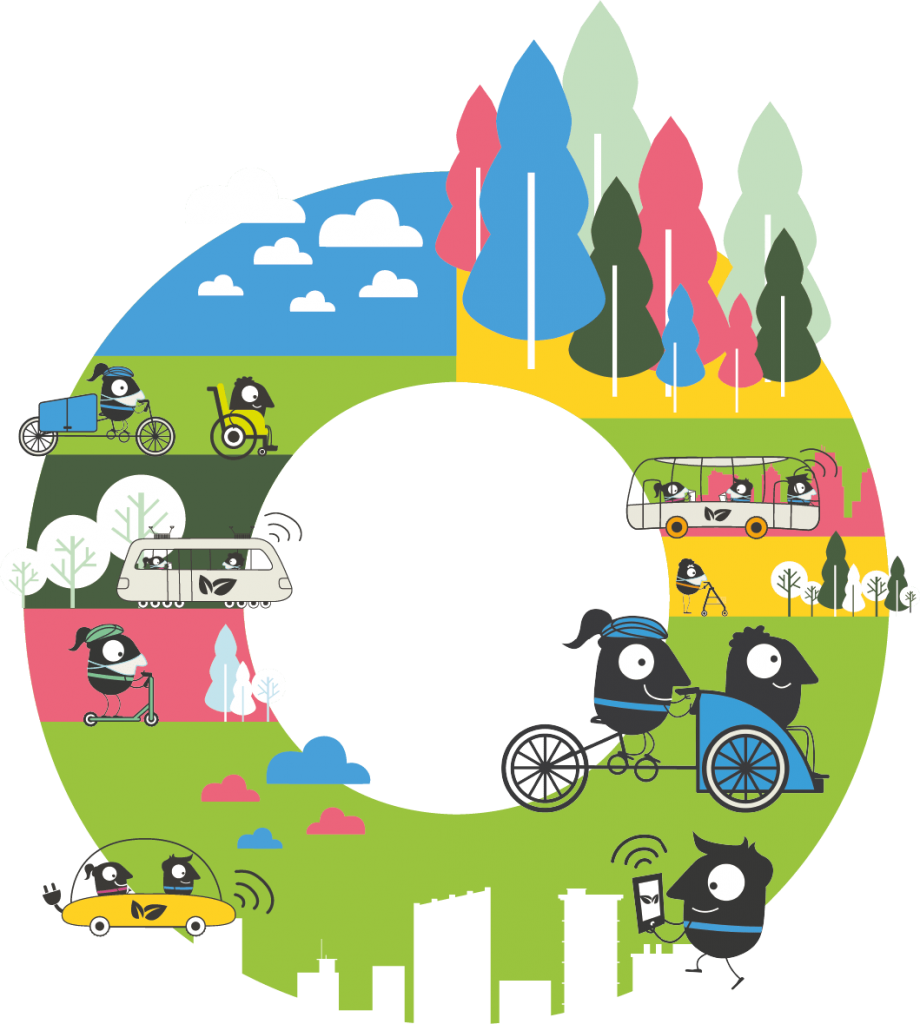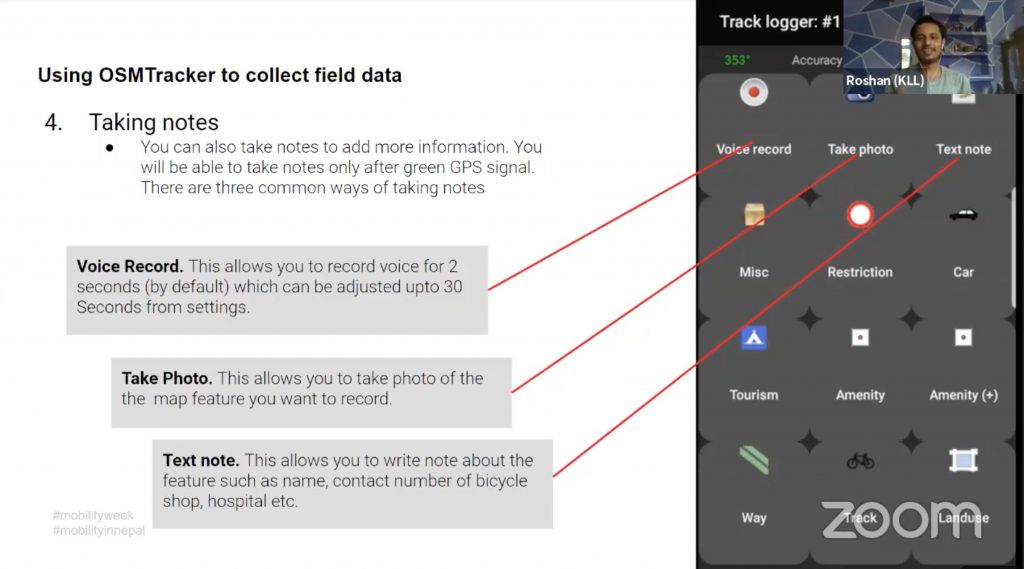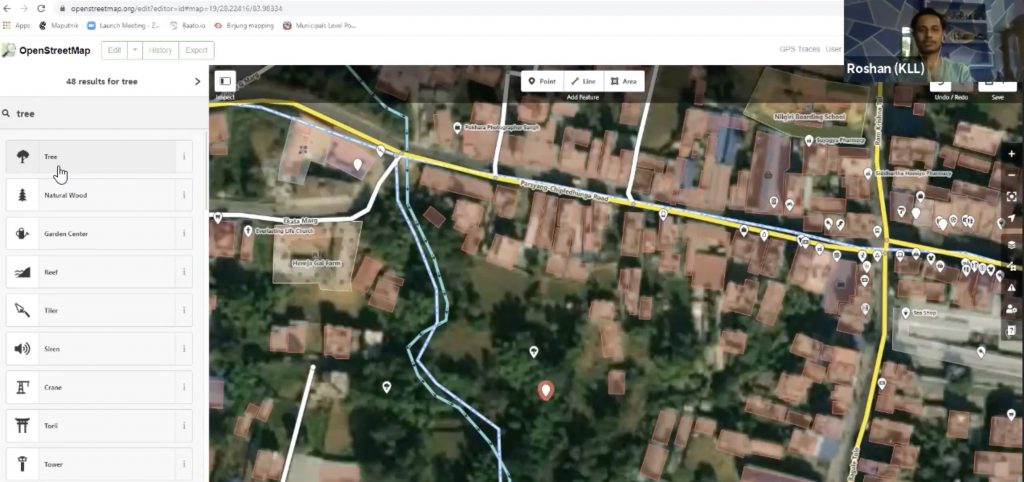
Sustainability, Mobility
Mobility Guide to improve public health and quality of life promoting clean mobility and sustainable urban transport.

Since 2002, European Mobility Week has sought to improve public health and quality of life through promoting clean mobility and sustainable urban transport. The campaign gives people the chance to explore the role of city streets and to experiment with practical solutions to tackle urban challenges, such as air pollution.
StoryCycle in 2020 with other agencies like European Union, British Council celebrated European Mobility Week by organizing Mapping for Mobility, bicycle training and Virtual Heritage Tour. In 2021, we are planning to scale the same events to a wider audience bringing together participants from more than two cities. Mapping for Mobility will help record information such as cycling routes, hiking trails, cycle friendly businesses and infrastructure, namely cycle maintenance shops, gear shops and so on. Bicycle training will train cyclists on the basics of cycling, safety measures and cycle maintenance. Virtual Heritage Tour is an hour long virtual event to disseminate information on cycle-friendly heritage locations and sustainable mobility plans and practices.
We also organized alternative tours on foot and bicycle and helped people discover the cities differently. We promoted sustainable mobility means and approaches such as cycling, running and walking by participating in free, fun activity challenges with friends and families.

Together with Nepal Mountain Bike Tours, StoryCycle has organized a new program to offer basics of bicycles to cycling enthusiasts. It is a free bicycle training that covers the basic subject of cycling to the solution to possible problems faced by cyclists. We encourage cyclists to solve the basic problems seen on bicycles themselves. We believe that such training encourages cyclists and reduces the hassle of travelling. Learn About Bicycles is an initiative to promote cycling culture in Nepal.

StoryCycle, Kathmandu Living Lab(KLL) and Baato have organised two-hour virtual mapping sessions to engage and empower everyday citizens, the daily commuter, the hobby cyclist, the occasional hiker, or the serious adventurer to capture, record, and publish data about their communities. During the program, the participants learnt to use digital tools to collect, record, and publish data on cycle routes and hiking trails into OpenStreetMap, the free and open map of the world.

Virtual Heritage Tours aims to empower youth and community narratives around the development of their localities. It equips initiators with digital tools, arts, and a platform to engage their own community as well as wider civic processes. Virtual Heritage Tours were incentivised by the pandemic and subsequent lockdowns and envisioned to take home-bound viewers on tours of locations around Nepal, sampling the landscape, culture, people and history while also taking stock of issues in these destinations.
Air, water, food, ecosystem, energy are essential elements of the environment that provide the necessary support to livelihood. Lately, due to rapid and haphazard urbanisation, natural resources are depleting in a similar pattern. Not to mention, the urbanisation has undermined the need for open spaces, parks, urban forests, green zones, sidewalks and most importantly the streetscapes. This has severely affected our ecosystem, including the food we eat, the air we breathe, the water we drink, the energy we use, and our overall existence. Besides the environment, it has disrupted the system we have for ourselves, the community, and the government.
The COVID-19 pandemic brought a global emergency, bringing devastation to millions worldwide, impacting lives and jobs, and grinding much of the global economy to a halt. It calls on all of us to come together with compassion and humbleness. There are several possible futures, all dependent on how governments and society respond to coronavirus and its economic aftermath. The public sector’s response, particularly from the government and public institutions, has been lower in combating the situation. The past policies and the preparedness have been receiving so much criticism. Therefore, to contribute a little to the public-centric design, it is utmost necessary to move forward. No sector is left to be affected in the realm. Hopefully, we will use this crisis to rebuild, produce something better and more humane.
In the current pandemic scenario, where we have the golden opportunity to restart the way we live is an immense opportunity for us to look at different approaches for air, water, food, energy, mobility and ecosystem. This would help us have localised jobs, business ideas, and sharing of resources. Investing in the public-centric design would also help us create a vibrant atmosphere – whereby the pollution, both noise and air, will reduce, improve social health of the inhabitants, encourage walking and other social activities, among others.
Meantime, we as individuals can do a few things for a new economy that is more democratic, equitable and sustainable. All natural resources need to be utilised most efficiently and ecologically possible. We can start working with the small and middle business community, buying local food and products, promoting local cafes and restaurants rather than franchises, and promoting Economic Democracy. Creating a lifestyle based on a more plant-based diet, installing solar panels on the house, biking or walking to work, recycling, opting for organic fair – trade food, and other green choices have an essential role in creating sustainability. We maintain a circular economy where all its byproducts circle back into production, just as they do in nature.

One of the most significant environmental challenges of the current time lies in mobility. The modes of transport that run on fossil fuels leave their indelible imprint on the environment. Getting people walking, biking and at the same time, sharing learnings from people about the use of public transport may bring some solutions to sustainable transport policies. Investing on sidewalks, green zones and streetscaping will make the city more vibrant and the economy will surge forward. The implementation of such an approach will help reduce carbon emissions, urban congestion, etc., at the same time. In addition, it will help de-stressing the urban population, provide fresh air to breathe, and encourage walking and other social activities. Streets should not be designed simply to accommodate vehicles’
movement – designers must prioritise meeting the needs of pedestrians, cyclists, and public transport users. But the rapid urbanisation and modernisation of the cities have almost neglected pedestrians’ rights to walk safely in the streets. Limited space, obstacles, lack of urban infrastructure and pollution have been the common issues for a safe pedestrian walk for decades. The pedestrian facility is not user-friendly to even an average person in the first place, let alone the weaker pedestrians like older adults, physically disabled people, pregnant women and children. As urban thinker Jane Jacobs says, the planners should prioritise walkers, not drivers, and sidewalks and small streets, not big highways. According to her, pedestrians bring social and economic vitality to the city. The city without them would be dull, economically stagnant, and unsafe.
Walkability
Walking is the natural mode of transportation, creating the largest transportation mode shared in Nepal’s urban cities. However, the current urbanisation and motorisation do not provide a safe and pleasant walking environment.
Cycling
Cycling history in Nepal is shorter compared to western countries. In Nepal, cycling started as a means of transport a little less than a century ago.
Public Transport
The population density in urban cities of nepal is growing rapidly, which increases traffic. This implies a growing demand to adapt and implement sustainable green public transport

Until a couple of decades ago, map making was a reserve for experts. It was upto surveyors, geographers, and cartographers to collect and transcribe information of the physical world and make it accessible through atlases, globes, and paper maps. However, in recent years, with the rise of web technologies, this is no longer the case.
OpenStreetMap (OSM) is a free and editable digital map database of the world. It is a crowdsourcing project that relies on volunteered geographic information (VGI). Data in OpenStreetMap, which is provided through open licences, is freely available for visualization, querying, download, and modification purposes by anyone who needs it.
OSM is similar to Wikipedia in the sense that anyone with an account can add, edit, and delete data present in it. Since its inception in 2004, the project has received contributions from more than seven million users.
To add data to OSM, mappers use different software tools such as JOSM, ID editor, etc. These tools allow users to trace points, lines, and polygons on top of freely available satellite imagery and mark them as bus stops, roads, or parks respectively.
OSM and mobility
Since its inception, OSM has always held a close relationship with the larger sustainable mobility community. Many early contributors to OSM were cyclists who surveyed with and for bicyclists, charting cycle routes and navigable trails in cities and neighbourhoods. Map data was collected from scratch by volunteers performing systematic ground surveys using tools such as a handheld GPS unit, a notebook, digital camera, or a voice recorder. In addition, with the increasing availability of OSM data, governments across the world have put this information into use in many real world urban mobility applications such as public transit optimization, analysis of open space accessibility, etc.
Mapping for mobility
As part of the EU Mobility Week Celebrations, to support mobility action and sustainable mode of transport, StoryCycle, KLL and Baato organized two different virtual mapping session to engage and empower everyday citizens — the daily commuter, the hobby cyclist, the occasional hiker, or the serious adventurer — to capture, record, and publish data about their communities. In these sessions, participants were trained to use OSMTracker and Strava to collect GPX traces of cycling and hiking routes, and create and use their OpenStreetMap accounts to upload this information to the OSM server.



StoryCycle worked with a youth group at Thapathali, Kathmandu, during one of our Heritage Walk Series — Bagmati Promenade, to encourage people to walk, collect virtual coins and help reduce carbon emissions in the process. The group’s app “Walkman Green Coins” rewards walking commuters with the coins which can be redeemed into gifts and coupons in the form of Green Credit on our green-commerce platform. It can be generated by choosing low carbon activities like walking, cycling, recycling, upcycling, using electric vehicles, rainwater harvesting, and so on through our green partners who are commercial environment enterprises.
Green Credit is awarded to the commuters based on factors such as a number of kms travelled, steps walked, challenges completed. The algorithm converts the credit into cash amount which can be used to buy products and get discounts and exciting opportunities in eco-friendly sustainable businesses and products. Some examples are discounts in local handicraft shops, cycle gears, cycle servicing with no costs and discounts in restaurants who promote sustainable living and sustainable mobility infrastructures.
Every step the user takes from one place to another gets tracked in the app and the user can get green coins as a virtual currency. These green coins can later be actuated to get discounts for various products/ services on its associated companies or receive goods from its green e-commerce platform. Every green coin has a carbon-related value. The carbon emission matrix of the Walkman calculates the amount of carbon decreased with every step. With each step 8.19 grams CO2 is reduced and a single green coin is earned. The app has already launched two versions and has worked successfully for one year with 3000+ users and has cumulatively covered 200,000 kilometres.
To avoid the app’s improper use by riding cars or motorbikes, Walkman have specified the average speed of 20 kmph to access the green coins and enter in the app. A user can earn 100 virtual green coins with every 1000 steps taken in a day. A research conducted before the operation showed that on average 1000 steps can help a person to remain healthy, both physically and mentally.


If you want to know more on campaigns and activities on Sustainable Mobility, follow the links below:
Baato – mapping organizations, Tutorials
https://baato.github.io/mapping/
Cycle City Network
https://cyclecity.org.np
Bhaktapur Tourism Development Commitee
http://bhaktapur.info
Walkman Green Coins
http://www.greencoins.com.np
Nepal Mountain Bike Tours
https://www.nepalmountainbiketours.com
Disclaimer
This publication was produced with the financial support of the European Union. Its contents are the sole responsibility of StoryCycle and do not necessarily reflect the views of the European Union.